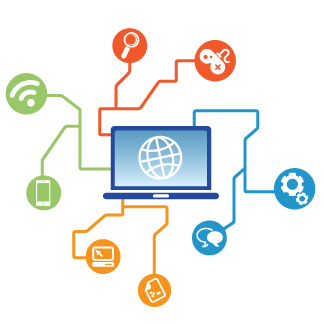In the realm of Internet of Things (IoT) and single-board computing, the Raspberry Pi stands apart as a versatile and affordable service for numerous projects. One essential facet of handling these tasks is developing efficient remote access to the Raspberry Pi, permitting customers to monitor and manage their IoT devices from anywhere in the world. The amalgamation of IoT surveillance and remote peer-to-peer (P2P) Virtual Private Cloud (VPC) connectivity has actually come to be a crucial method for lovers and professionals alike.
The requirement for remote accessibility to IoT gadgets has become increasingly obvious as the IoT ecosystem proceeds to expand. Keeping track of the condition of IoT gadgets in real-time has actually ended up being a fundamental need for efficient administration.
P2P VPC Innovations: Redefining the Landscape of IoT Connectivity
Ensuring the security of remote access to IoT gadgets is paramount. Safely connecting to Raspberry Pi tools is not just concerning benefit yet likewise concerning safeguarding delicate information and avoiding unauthorized gain access to. Remote SSH (Secure Shell) has actually emerged as a reliable approach for firmly accessing and managing Raspberry Pi gadgets. It develops a safe and secure interaction network over an unconfident network, making it an ideal option for remotely monitoring and managing IoT devices.
The convergence of remote access and IoT surveillance has actually caused innovative services that enable individuals to keep a vigilant eye on the standing of their tools. Remote monitoring of IoT devices has ended up being much more sophisticated, permitting individuals to collect understandings right into efficiency metrics, receive signals for anomalies, and even execute remote diagnostics. This level of control is particularly critical for applications where IoT devices are deployed in remote or hard to reach locations.
Peer-to-peer (P2P) connection in the context of IoT has actually obtained grip as it supplies a direct communication web link between tools without the need for middlemans. P2P IoT remedies allow effective information exchange in between gadgets, improving the overall responsiveness of the system. Combining P2P connectivity with a Virtual Private Cloud (VPC) design ensures a personal and separated network atmosphere, adding an added layer of protection to remote accessibility.
The idea of safely accessing IoT tools extends past Raspberry Pi to encompass a wide range of gadgets that comprise the IoT ecosystem. Whether it’s sensing units, actuators, or various other IoT components, establishing a protected connection is important for preserving the integrity and confidentiality of the transmitted information. Secure accessibility methods, such as SSH, play a crucial role in achieving this objective, guaranteeing that only accredited individuals can interact with and monitor IoT gadgets from another location.
The assimilation of SSH into the remote accessibility structure for IoT tools allows users to remotely keep track of Raspberry Pi devices also when they lie behind firewall softwares. This is especially important for circumstances where IoT devices are deployed within corporate networks or private environments with stringent security procedures. SSH’s capability to traverse firewall programs securely makes it a vital device for handling IoT framework in varied and challenging network environments.
For added understandings on enhancing remote access to Raspberry Pi and boosting IoT gadget monitoring, have a look at remotely ssh iot device behind firewall
Remote SSH Essentials: A Guide to Monitoring IoT Devices with Raspberry Pi
Peer-to-peer (P2P) connections within a Virtual Private Cloud (VPC) for IoT introduce an unique dimension to remote gain access to remedies. This strategy not just makes certain straight connection yet also offers a scalable and separated network atmosphere for IoT tools. The mix of P2P and VPC addresses usual challenges related to conventional remote access approaches, offering a much more durable and adaptable service for firmly linking and monitoring IoT gadgets.
In conclusion, the landscape of remote access to IoT devices, especially Raspberry Pi, has progressed to incorporate advanced options that focus on safety, effectiveness, and scalability. The combinations of IoT tracking, remote P2P VPC connectivity, and safe and secure access procedures like SSH has driven the capacities of lovers and professionals in managing their IoT jobs. As the IoT ecosystem remains to expand, the value of trustworthy and secure remote access solutions will only end up being more pronounced, driving more technology in this dynamic field.